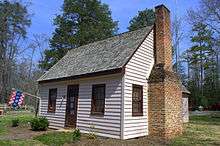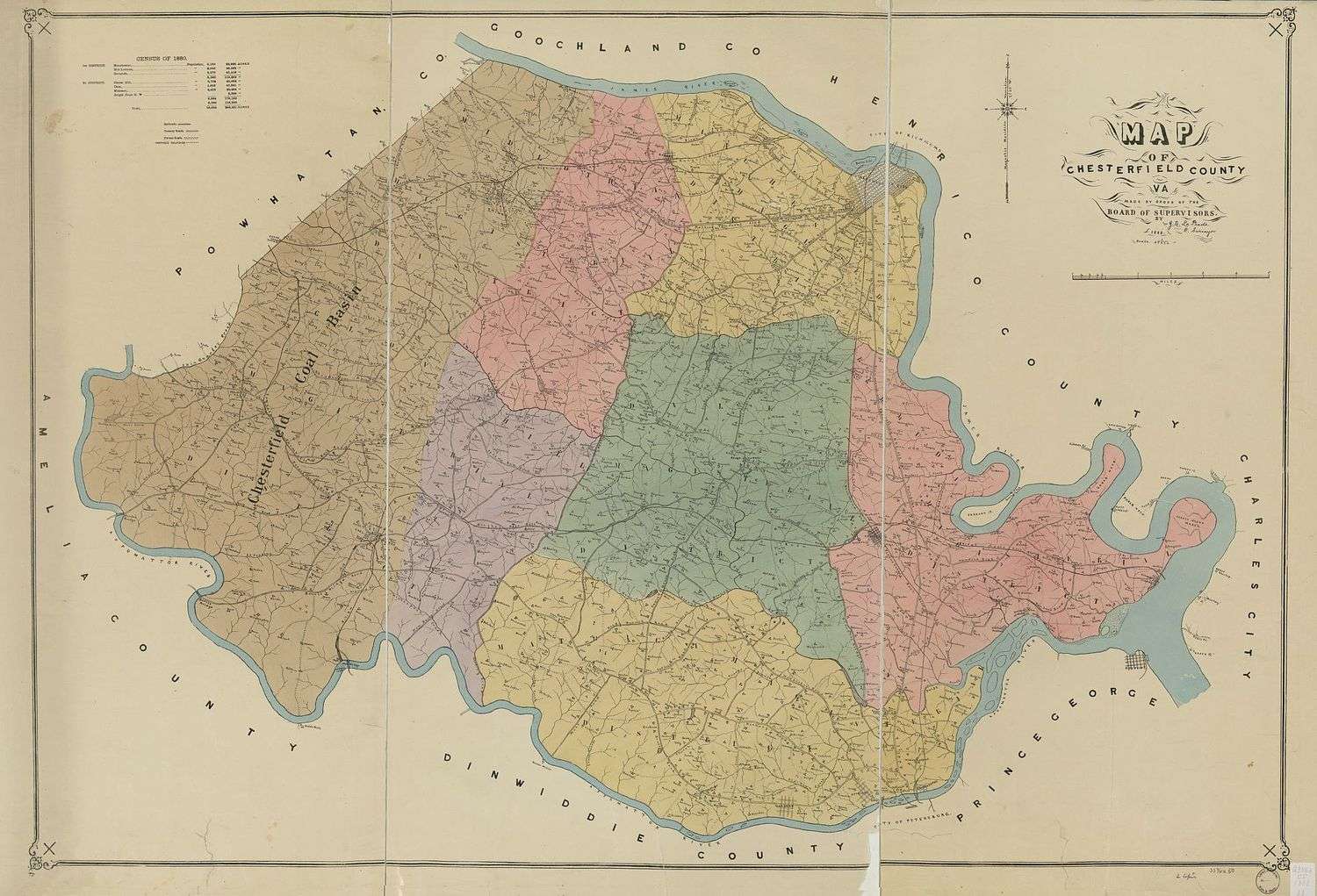Brighthope Railway
 The Brighthope Railway Engine | |
| Locale | Chesterfield, Virginia |
|---|---|
| Dates of operation | 1877–1889 |
| Successor | Farmville and Powhatan Railroad |
| Track gauge | 4 ft 8 1⁄2 in (1,435 mm) standard gauge |
| Previous gauge | Standard until 1881, then was narrowed to narrow gauge, 3 ft (914 mm).[1] |
| Headquarters | Richmond, Virginia |
In 1886, Randolph Harrison, of the Virginia department of Agriculture, cited Cumberland Mining Company, stating that the United States had purchased stock in the Brighthope Railway. He continued by citing their assertion that extending the railway into Cumberland would increase the value of farms there because they could sell consumer agricultural products such as fruit, dairy and vegetables to all markets of Virginia.[2] The Brighthope Railway was founded in 1877 by the creditors of the Clover Hill Railroad who bought that railroad when the Clover Hill Railroad went bankrupt. The Brighthope Railway continued in the role of the Clover Hill Railroad, hauling coal from the Clover Hill Pitts at Winterpock, Virginia. In addition to coal, the Bright Hope Railway transported timber and agricultural products and had passenger service.[3] The Bright Hope Railway was narrowed from standard gauge to narrow gauge and rerouted in 1881. In 1889 the Bright Hope Railway was sold in foreclosure for $200,000 to the Farmville and Powhatan Railroad,[4] which became the main line of the Tidewater and Western Railroad. The line survived until 1917 when it was pulled up and sent to France for the World War I effort.[4][5]
Stations


The Brighthope Railway was a standard gauge railway to Osborne Landing when it was created. In 1881, sand and silt from the Dutch Gap Canal made the Osborne Landing dock unreachable by boat.[6] The Railway was narrowed to narrow gauge and routed to Bermuda Hundred, the newer docks which could harbor coastal colliers. It was lengthened four miles at the western end to reach the Appomattox at Epps Falls in the Piedmont.[4] The Railway has a bridge over the Richmond and Petersburg Railroad and the Swift Creek Rail Bridge.
- Before 1881: railroad length: 21 miles
- Winterpock, the small coal mining town, where the Bright Hope Mines coal mines were located.
- Summit
- Perdue[7]
- Fendley was a water station for the train located on present day Beach Rd (37°22′18.5″N 77°33′34″W / 37.371806°N 77.55944°W). This station was moved to become the office for Pocahontas State Park.
- Chester was a small town at the intersection with the Richmond and Petersburg Railroad in the 1870s.[8]
- Osborne's, docks on the James River in the Tidewater region site of Action at Osborne's in 1781.[1]
- After 1881: railroad length: 32 miles
- Appomattox River, in the Piedmont, the Western most stop.
- Winterpock
- Summit
- Perdue
- Fendley Station
- Chester
- Bermuda Hundred on the James River in Tidewater, where coal could be transported by coastal colliers.[4][9]
Brighthope rail cars
in 1883, the Brighthope Railway had four steam locomotives, two passenger cars and 144 freight cars. Railroad engineers included Edwin B., Cheatham; fireman Jerry Mack and conductor Luther Puckett.[10]
Modern pathway

Following the path of the old railroad today travels down Virginia State Route 10 from Bermuda Hundred on the north side of the Appomattox River and then east on Carver Heights Drive, Chester, through a landfill and housing complex, next to Bright Hope Road then along Beach Road then South on Coalboro Rd.
Location
The Brighthope Railway shown in southern Chesterfield, Virginia on a map drawn by La Prade in 1888.
References
- 1 2 Virginia. State Corporation Commission (1915). Annual Report. p. 747.
- ↑ Virginia. Dept. of Agriculture; Randolph Harrison (1886). Hand-book of Virginia. Johns & Company, Book and Job Printers. pp. 65–66.
- ↑ "Historic Beach Station National Register of Historic Places Virginia Historic Landmark Chesterfield County Historic Landmark" (PDF). The Chesterfield Historical Society of Virginia. July 2014.
- 1 2 3 4 George Woodman Hilton (1990). American Narrow Gauge Railroads. Stanford University Press. pp. 543–. ISBN 978-0-8047-1731-1.
- ↑ The Southeastern Reporter. West Publishing Company. 1903. pp. 555–.
- ↑ Virginia. State Corporation Commission (1917). Annual Report of the State Corporation Commission of Virginia: Compilations from Returns of Railroads, Canals, Electric Railways and Other Corporate Companies. J.H. O'Bannon, Superintendent of Public Printing. pp. 973–.
- ↑ "Virginia Landmarks Register". Virginia Department of Historic Resources. Retrieved 5 June 2013.
- ↑ "Moving Forward…The Comprehensive Plan For Chesterfield County,CHAPTER 8: HISTORICAL & CULTURAL RESOURCES". Chesterfield, Virginia. p. 55. Archived from the original on 2016-04-13. Retrieved 19 April 2016.
- ↑ James Macfarlane (1890). An American Geological Railway Guide, Giving the Geological Formation at Every Railway Station, with Altitudes Above Mean Tide-water, Notes on Interesting Places on the Routes, and a Description of Each of the Formations. D. Appleton. pp. 359–.
- ↑ "Railroad Provided Lifeline to Old Winterpock 'Boomtown'". The Amelia Bulletin Monitor. Amelia County, Virginia. June 19, 1986.
